Newsletter US Immigration Update November 2014
Volume Nineteen, Number Ten

Published by the Law Offices of Carl Shusterman, 600 Wilshire Blvd, Suite 1550, Los Angeles, California, 90017. Phone: (213) 623-4592 x0.
Subscribe to our E-Mail Newsletter, join the conversation on our Immigration Facebook Page, follow our Blog Posts and subscribe to our “How-To” Immigration Videos.
Client Reviews

Professional and Knowledgeable Law Firm
“I’ve had a decade of experience with Mr. Shusterman’s law firm. I used them for my immigration needs from H1 to citizenship. It is safe to say this is one of the most competent, professional and knowledgeable law firms. If there is a firm that can handle any possible immigration case routine or otherwise; then this is it.”
- D. Chen, Phoenix, Arizona
Read More Reviews
Zoom Consultations Available!
Newsletter US Immigration Update November 2014
TABLE OF CONTENTS:
1. Immigration Reform: What Will Obama Do?
2. Jobs for Registered Nurses in the US
3. Shusterman’s Upcoming Immigration Seminars
4. Supreme Court and Consular Nonreviewability: Kerry v. Din
5. Success Story: DACA Granted Despite DUI
6. Trivia Quiz: The New Colossus
7. State Department Visa Bulletin for November 2014
8. Immigration Government Processing Times
9. Ask Mr. Shusterman: Employers: Form I-9 on Demand Webinar
10. Winner of Our October 2014 Trivia Quiz!
NEWS FLASHES:
-
- 9th Circuit Updated E-Filing System – On October 27, the 9th Circuit for the US Court of Appeals released their updated national case management and electronic case files system, NextGen CM/ECF. In order to use this new system and to use e-filing, users must have individual, upgraded PACER accounts and follow a few simple instructions.
-
- CBP Restrictions on Access to Counsel – In response to a FOIA request, the CBP has released information on their access to counsel policies, including access to counsel during inspections, while in detention, and with regards to the treatment of minors.
-
- EB-5 Processing Times Report – On October 24, USCIS released updated processing times for EB-5 cases, with data current through August 21. Of important note, processing times for Form I=829 have decreased from 15.2 months to 7.2 months.
-
- EOIR Legal Orientation Program Sites Expansion – As of November 1, the EOIR will begin assisting families detained at the Karnes Family Residential Center in Texas as part of an expansion of the Legal Orientation Program (LOP). Through LOP, members of non-profit organizations explain immigration court hearings to detained individuals.
-
- EOIR Memos on Unaccompanied Children – The Executive Office of Immigration Review (EOIR) has released two memos for immigration judges regarding the docketing of unaccompanied minor cases. One memo covers continuances in order to obtain representation, adjournments, and appearances by custodians. The EOIR further addresses the need for administrative closure or multiple continuances when a child is seeking special immigrant juvenile status, as well as the use of a Friend of the Court during hearings.
-
- EOIR on FY2015 Cancellation Numbers – The Executive Office of Immigration Review (EOIR) has announced that it is likely that the cap of 4,000 suspension/cancellation of removal numbers will be exceeded by the number of decisions currently in the queue. As such, immigration judges have been advised to continue to follow EOIR’s memo: Procedures on Handling Applications for Suspension/Cancellation in Non-Detained Cases Once Numbers are no Longer Available in Fiscal Year.
-
- FOIA Lawsuit Filed to Reveal Expedited Removal Policies – On October 21, immigration rights groups filed a lawsuit against the government after immigration agencies failed to respond to a FOIA request on the policies surrounding the expedited removal of Central American families. These immigration advocates hope that this litigation will help to reveal their policies and procedures regarding the detention of Central American families with children, particularly in Artesia, New Mexico.
-
- Haitian Family Reunification Parole Program – In early 2015, the DHS will begin implementing their new Haitian Family Reunification Parole Program, intended to expedite the immigration of certain eligible Haitians who are relatives of US citizens or permanent residents in the US. Eligible Haitians include those with approved family-based petitions waiting for their priority dates to become current. Further information will be made available by the end of the year, so stay tuned.
-
- HHS Gives Money to Lawyers to Help Unaccompanied Children – The Department of Health and Human Services has announced that it will provide $9 million over 2 years to attorneys so that they can assist unaccompanied minors with their cases in immigration court. This program is expected to assist around 2,600 young immigrants.
-
- High-Skilled Worker Shortage Crisis – As a part of the Republican tech agenda,Senator Orrin Hatch has called for raising the H-1B visa cap, stating that the current shortage of high-skilled workers is a crisis. This claim is counter to what some of his GOP colleagues have argued; namely that the hiring of more foreign workers would hurt the American workforce.
-
- HRW Report: Central Americans with Expedited Removal from US – Human Rights Watch has released a report on the expedited removal of certain Central Americans who may have had valid claims for asylum in the US but were turned away due to inefficient screenings. The report, entitled: “You Don’t Have Rights Here” – US Border Screening and Returns of Central Americans to Risk of Serious Harm, is based on interviews with 35 Central Americans either currently in detention or already sent back to Honduras, despite their fears of returning to violence or persecution.
-
- Immigration Book – “Passaic: The True Story of One Man’s Journey Through American Immigration, Detention and Deportation” is in print and immediately available on Amazon.com; click through to the website of Author Daniel Kunstler.
-
- Immigration “How-To” Videos – Our 60+ “How-To” Immigration Videos have been viewed over 700,000 times. Join our 1000+ subscribers on our YouTube channel. Subjects include how to obtain a green card through employment, how to become a US citizen, how to win your case in immigration court, how to select an immigration attorney and many other topics. Our video Green Cards through Marriage has been viewed over 200,000 times. We encourage you to take advantage of this free resource.
-
- Marriage Fraud by Cylvia Haynes, Oregon’s “First Lady” – Cylvia Haynes, the fiancée and long-time partner of Oregon’s Governor John Kitzhaber, recently admitted to participating in a sham green card marriage years ago. When tzhaber, recently admitted to participating in a sham green card marriages years ago. In an interview with the Statesman Journal, I explain that it is unlikely that Cylvia will face criminal or civil penalties due to the statue of limitations, and that Abraham B. Abraham, the ex-husband, could face consequences depending on what his current immigration status is. If he is still a permanent resident, he is deportable. However, if he is a citizen, it will be up to the US Attorney’s Office to decide whether or not to revoke his citizenship. I was interviewed by the Statesman Journal, I explained that it is unlikely that Cylvia will face criminal or civil penalties due to the statue of limitations, and that Abraham B. Abraham, the ex-husband, could face consequences depending on what his current immigration status is. If he is still a permanent resident, he is deportable. However, if he is a citizen, it will be up to the US Attorney’s Office to decide whether or not to revoke his citizenship.
-
- Obama’s H-1B Reform Plan Criticized by Senator Grassley – Due to a lack of action by Congress, President Obama has stated that he will take executive action to reform the immigration system following the mid-term elections. Among his proposals are plans to change the H-1B program to make it more efficient and to retain more high-skilled workers. However, this has drawn criticism from Senator Grassley who believes this would harm US workers. Stay tuned for more announcements from the President.
-
- TPS Extended for Hondurans and Nicaraguans – On October 16, the DHS announced the extension of Temporary Protected Status (TPS) for Hondurans and Nicaraguans, effective January 6, 2015 through July 5, 2016. Those beneficiaries seeking to extend their TPS must re-register during the 60-day period that began on October 16.
-
- Unaccompanied Minors Sent Home without Due Process – At the beginning of October, I was interviewed by Forbes magazine regarding the border crisis and the influx of Central American Children. During the interview, I explained my concerns about sending unaccompanied minors back to their home countries without due process and the chance to argue their case before an immigration judge, a concern shared by many immigration attorneys and advocates.
- USCIS Guidance on Immigrant Fee Payment – USCIS has updated their ELIS Immigrant Fee Payment Guide by clarifying instructions and adding screenshots to make the guide more user-friendly. The guide has also been translated into Spanish for wider distribution.
1. Immigration Reform: What Will Obama Do?
The November elections are rapidly approaching and President Obama has pledged to take action on immigration reform if Congress refuses to address this important issue.
And while the issue of having over 11 million undocumented persons living in the United States, some for many years, is a major issue, it is far from being the only issue.
Consider the misfit between the H-1B program and the issue of green cards for high-tech and other skilled workers needed by our economy. The H-1B program has become a lottery. This year, less than 50% of professionals sponsored by U.S. employers were able to get H-1B status because of artificial, government-imposed numerical limitations.
And a great number of persons who do get H-1B status, cannot get green cards for many years or even decades because of disparity between the way the government counts H-1B numbers and the way they count green card numbers.
An H-1B number is allocated to a professional employee, not to the spouse and children of the professional. Spouses and children of H-1B professionals have never been counted against numerical limits. However, when it comes to green cards, spouses and children are counted against numerical limits, resulting in enormous waiting times.
Such problems can easily be solved by Congress, but our legislative branch has not seen fit to pass a major piece of immigration reform legislation in almost 20 years.
What Obama Can Do
Fortunately, there are certain areas of immigration reform that can be accomplished by the Executive Branch.
President Obama, who has deported more persons in the past 6 years than any President in history, over 2,000,000, knows that this, in itself, is not a solution to the overall problem. Yes, it is important to deport criminals and secure our borders, but this approach has its limits.
Two years ago, President Obama started the DACA program which has resulted in work cards for almost 600,000 young persons who were brought to the U.S. by their parents. I counsel these young people at UCLA, and it is wonderful to see them graduate from college and obtain professional jobs instead of having to hide in the shadows. This is an enormous plus for our economy.
Hopefully, the President will extend this program to their parents and to others who have resided in the U.S. for long periods of time, pay their taxes and have no criminal record.
But the President’s program should do much more than simply expand DACA.
At a minimum, he should change the way employment-based and family-based legal immigrants are admitted to our country. As with the H-1B program, only the principals should be counted toward the overall and per-country quotas.
With this small change, which is clearly within the authority of the Executive Branch of government, waiting lines for green cards for professionals and skilled workers as well as close relatives of U.S. citizens and green card holders would be substantially reduced.
We look forward to the President announcing these and other immigration reforms before the end of this year.
2. Jobs for Registered Nurses in the US
In our September newsletter, we published an article entitled “100 Nurses with Current Priority Dates Looking for Jobs”.
We explained that the waiting times for the EB-3 preference category for Filipinos had been cut in half, from 6 years to 3 years. Also, that many hospitals and other health care employers had decided not to continue sponsoring RNs and that we were looking for employers to sponsor the 100+ nurses we represent .
Little did we realize that we would be approached by dozens of hospitals looking to hire foreign-born RNs. Not all foreign-born nurses, but those with currently priority dates and a minimum of 2-3 years of experience.
This is great news for both nurses and employers. The nurses need to be re-petitioned, but they are able to retain their old priority dates, so that they can immigrate to the US in about one year rather than endure a 3-year wait.
Now, we are in a position to make a fantastic offer to foreign-born RNs that we could not have anticipated in September.
If your priority date is current and you have 2-3 years of nursing experience, we may be able to match you with an employer, and you may be able to immigrate to the US as early as 2015!
Simply schedule an appointment with us and send us your resume, license, VisaScreen, etc. and let’s see what we can do.
For health care employers, please note that our recruitment fee is zero! Employers who are interested in hiring experienced RNs should call Elsa Garcia at (213) 623-4592 x 0.
3. Shusterman’s Upcoming Immigration Law Seminars
-
- Pincus Professional Education
Asylum, Detention, and Removal Seminar
Los Angeles Athletic Club
Los Angeles, CA
November 7, 2014
Topic: “Case Studies – Asylum”<
- 2014 AILA California Chapters Conference/li>
San Jose Marriott
San Jose, CA
November 13-15, 2014
Topic: Naturalization - JacobsCLE
- The American Immigration Law Informer
Los Angeles, CA
November 24, 2014
Topic: “Temporary Working Visas and Green Cards through Employment” - Free Consultations for UCLA Students
- UCLA
Los Angeles, CA
December 5, 2014 - PIHRA District #1
- McCormick and Schmicks
Los Angeles, CA
March 18, 2015
Topic: “Employment-Based Immigration” - Immigration CLE
- St. Mary’s University
San Antonio, TX
March 6, 2015
4. Supreme Court and Consular Nonreviewability: Kerry v. Din

Today, if I, a US-born citizen, were sponsoring my wife for a green card, and the USCIS denied her application without explaining why, I could sue the USCIS in Federal Court to challenge the decision.
However, if a consular officer abroad did the same, I would not have access to the Federal Courts because of the “doctrine of consular nonreviewability”.
Why should the Federal Courts lack jurisdiction over the decision of a State Department consular officer to deny a green card to the spouse of a US citizen when they clearly have jurisdiction to review an identical decision by a USCIS examiner? This makes no sense whatsoever.
The Supreme Court’s recent decision to grant certiorari in Kerry v. Din, 718 F.3d 856 (9 Cir. 2013), a Circuit Court decision which relies on a tiny crack in this absurd doctrine, allows the Court to reexamine consular nonreviewability for the first time in over 40 years.
Here is the story behind Kerry v. Din:
In September 2006, Fauzia Din, a US citizen, married a man born in Afghanistan. The next month, she submitted an I-130 visa petition on his behalf. In 2008, the USCIS notified her that the petition was approved and, in September of that year, Ms. Din’s husband had his green card interview.
He answered all the questions truthfully, including the ones regarding his employment as a payroll clerk for the Afghan Ministry of Social Welfare during the Taliban regime and his job as a clerk for the Afghan Ministry of Education for the new government which came to power after the US invasion. The interviewing officer informed him that he would receive his immigrant visa in the next few weeks.
However, after many months of inquiries from him and his wife, in June 2009, he was informed that his visa had been denied and that he was ineligible for a waiver.
After an inquiry as to why he was inadmissible, in July 2009, the US Embassy e-mailed him that his visa had been denied under 8 U.S.C. 1182(a)(3)(B). This section of law lists a wide variety of grounds of inadmissibility due to terrorist activities.
Did the Embassy believe that he was a terrorist, or merely that he is inadmissible for having worked as a payroll clerk for the Taliban-controlled government? The State Department refused (and continues to refuse) to answer this all-important question.
Ms. Din sued the State Department in Federal Court in an effort to get an answer. However, the District Court Judge dismissed her complaint citing the doctrine of consular nonreviewability.
She appealed to this ruling to the US Court of Appeals for the 9th Circuit. On May 23, 2013, the Court ruled, in a split decision, that there is a limited exception to this doctrine which is applicable to her. They ordered the State Department to provide Ms. Din with a “facially legitimate and bona fide” reason for denying her husband’s immigrant visa citing the Supreme Court’s decision in Kleindienst v. Mandel, 408 U.S. 753 (1972).
The Court stated that while generally, federal courts are without power to review the actions of consular officers:
“…we have recognized a limited exception to the doctrine of consular nonreviewability. When the denial of a visa implicates the constitutional rights of an American citizen, we exercise ‘a highly constrained review solely to determine whether the consular official acted on the basis of a legitimate and bona fide reason.’”
Why is the State Department challenging this extremely limited exception when their own Customer Service Statement to Visa Applicants states, “We promise to you, the visa applicant, that…we will explain the reason for any visa denial to you.”?
Hopefully, the Supreme Court will rule that a US citizen who has been fighting to bring her husband to the US for over 8 years, is entitled to more than a citation to a code section as the reason why a consular officer denied her husband’s application to live together with her in the US.
More importantly, the entire rationale behind the doctrine of consular nonreviewability is contrary to the concept of a free society in which citizens are guaranteed certain rights.
The Supreme Court, in considering Kerry v. Din, should reexamine consular nonreviewability since this doctrine undermines the right of due process of law guaranteed in the Bill of Rights.
The Supreme Court could uphold individual rights as intended by the framers of the Constitution and protect US citizens from the unchecked power of big government by following the logic of the dissent in US ex rel. Knauff v. Shaughnessy, 338 U.S. 537 (1950) in which Justice Jackson, joined by Justices Black and Frankfurter, explained:
“Now this American citizen is told he cannot bring his wife to the United States, but he will not be told why. He must abandon his bride to live in his own country or forsake his country to live with his bride…”
“Security is like liberty in that many are the crimes committed in its name. The menace to the security of this country, be it great as it may, from this girl’s admission is as nothing compared to the menace to free institutions inherent in procedures of this pattern. In the name of security this police state justifies its arbitrary oppressions on evidence that is secret, because security might be prejudiced if it were brought to light in hearings. The plea that evidence of guilt must be secret is abhorrent to free men, because it provides a cloak for the malevolent, the misinformed, the meddlesome, and the corrupt to play the role of informer undetected and uncorrected…”
5. Success Story: DACA Granted Despite DUI
This month’s success story discusses how one of our clients was granted deferred action and employment authorization through the Deferred Action for Childhood Arrivals (DACA) program despite having previously been charged with Driving Under the Influence (DUI).
President Obama announced the DACA program in June 2012, whereby, undocumented youth who had entered the US as children and meet certain other requirements would not be deported. These young immigrants would be granted temporary permission to stay in the US, known as deferred action, and have the ability to obtain a work permit.
Among the eligibility requirements is a clean criminal record – more specifically, that an individual must not have been convicted of a felony, significant misdemeanor, or three or more insignificant misdemeanors.
Ricardo consulted with our firm shortly after the policy was announced in June 2012 hoping that he had a chance of obtaining work authorization despite the fact that he was charged with a DUI in 2009. He paid off all of the fines, completed his community service, and took the necessary classes in order to complete his probation. He has not committed any crimes since that time.
Luckily for Ricardo, the DACA program differed from many other immigration policies in the fact that USCIS stated they would consider applicants with expunged crimes on a case-to-case basis. However, USCIS didn’t specify as to what factors would contribute to a favorable outcome for applicants, so many individuals with expunged records were hesitant to apply before they had more information.
During Ricardo’s consultation, I asked him many questions to see if he could qualify for any other type of immigration benefit that might be less risky. Ricardo mentioned that he was unsure whether his father, whose status was unkown, had petitioned him before his passing when Ricardo was 13. I suggested that we submit a Freedom of Information Act (FOIA) to obtain his father’s file and see if Ricardo had any other options.
Attorney Amy Prokop took on Ricardo’s case and immediately sent out the FOIA request. Unfortunately, when she received the FOIA response a few months later, she discovered that no petition had been submitted on Ricardo’s behalf. As such, she decided that applying for DACA was Ricardo’s best option and advised him to have his DUI expunged right away.
Along with submitting evidence of the expungement, Attorney Amy Prokop wanted the application to contain numerous sympathetic factors in order to build up a favorable case for Ricardo. As USCIS had still not released more specific guidance as how to apply with an expunged record, it was a long and cautious process to build up evidence to show that Ricardo is a valuable member of a society who deserves to be granted deferred action.
To begin with, Ricardo had taken on the role of head of the household following his father’s passing, including caring for his mother, who is diabetic. Attorney Prokop provided copies of Ricardo’s mother’s medical records and his tax returns, on which his mother is a dependent.
She also showed that Ricardo was a moral, constructive member of society by including letters from his employers and co-workers attesting to the fact that he makes significant contributions both to his industry and to the community. Ricardo worked at a produce company in the procurement department and often donated produce to food banks as well volunteering in various fund raisers. Attorney Prokop also included a letter written by Ricardo himself explaining the circumstances surrounding his DUI, the remorse he feels, and that he does not pose a threat to public safety.
In addition, just as Attorney Prokop was finalizing the application to be sent out, Ricardo found out that his girlfriend, a DACA recipient herself, was pregnant. Therefore, Attorney Prokop submitted evidence of the pregnancy to show that Ricardo needed to stay in the country and work in order to provide for his baby and girlfriend. She emphasized that it was an absolute economic necessity for Ricardo to be granted DACA not only for his own well-being but for the good of his mother, girlfriend, and unborn child.
After several months, Ricardo’s application was approved, and he, his girlfriend and his mother are all thrilled that he is now able to work and reside in the US with them without fear of removal.
6. Immigration Quiz
Quiz Removed
7. State Department Visa Bulletin for November 2014
EMPLOYMENT CATEGORIES
For the Employment-Based (EB) preference categories in November, it is the best of times and the worst of times.EB-3 worldwide (which includes the Philippines and Mexico) leaps forward 8 months. The waiting times for green cards for professionals, skilled and unskilled workers is now only a little over 2 years. What’s more, the EB-3 category for persons born in the Peoples Republic of China advances 9 months. The bad news is for EB-3 India which inches ahead by only 1 week.
EB-2 is quite another story. While the worldwide category has no backlogs, EB-2 China advances by 3 weeks while EB-2 India retrogresses over 4 years, back to 2005. American needs talent, but sadly, our immigration laws penalize many of the best and the brightest.
The following chart tells the story of the EB numbers in detail:
| Categories | Worldwide | China (PRC) | India | Mexico | Philippines |
|---|---|---|---|---|---|
| 1st | Current | Current | Current | Current | Current |
| 2nd | Current | 12-08-09 | 2-15-05 | Current | Current |
| 3rd | 6-01-12 | 1-01-10 | 11-22-03 | 6-01-12 | 6-01-12 |
| Unskilled | 6-01-12 | 7-22-05 | 11-22-03 | 6-01-12 | 6-01-12 |
| 4th | Current | Current | Current | Current | Current |
| Religious | Current | Current | Current | Current | Current |
| 5th | Current | Unavailable | Current | Current | Current |
FAMILY CATEGORIES
The worldwide family-based (FB) categories all advance modestly, between 1 and 8 weeks as do the chronically backlogged categories for Mexico and the Philippines.The chart below tells the story in detail:
| Categories | Worldwide | China (PRC) | Mexico | Philippines |
|---|---|---|---|---|
| 1st | 6-08-07 | 6-08-07 | 7-08-94 | 11-01-04 |
| 2A | 3-01-13 | 3-01-13 | 9-22-12 | 3-01-13 |
| 2B | 1-01-08 | 1-01-08 | 9-08-94 | 1-01-04 |
| 3rd | 12-08-03 | 12-08-03 | 11-01-93 | 6-08-93 |
| 4th | 2-08-02 | 2-08-02 | 2-15-97 | 5-01-91 |
8. Immigration Government Processing Times

9. Ask Mr. Shusterman: Employers: Form I-9 On-Demand Webinar
The DHS has recorded a series of 14 short videos which explain to employers the basics of completing and storing I-9 forms. The videos also instruct employers how to comply with antidiscrimination laws in the I-9 process.Having conducted over 100 I-9 seminars for employers since 1986, and creating I-9 videos, it always distresses me to see employers fined millions of dollars for I-9 violations. Hopefully, the following DHS videos will help employers understand their obligations under the I-9 laws and procedures:
1. Introduction
2. Why use Form I-9?
3. Who can legally work in the United States?
4. How do antidiscrimination laws protect employees?
5. Who is required to have a Form I-9?
6. How to Complete Section 1
7. How to Complete Section 2
8. How to Complete Section 3
9. Acceptable Documents for Form I-9
10. How should I store Form I-9s?
11. How long am I required to keep Form I-9s on file?
12. What do I do if I discover a mistake or I’m missing a Form I-9 for an employee?
13. How do Form I-9 and E-Verify work together?
14. Where can I find contact information and additional resources?

For example, there is a box on Part I of the form for persons who are noncitizen nationals to check. I would venture to guess that 99.9% of employers (and probably most DHS employees) have no idea what a noncitizen national is.
Also, many rules for completing I-9 forms are not listed in the law or even in the USCIS regulations. When can an H-1B employee who is changing jobs start working for the new employer? What forms does he have to present to show that he is authorized to be employed for I-9 purposes? These type of questions are not covered in the videos.
We agree with the DHS that in addition to watching the videos, you must consult I-9 Central and the Employers’ Handbook. You should also retain the services of an experienced immigration attorney to answer questions and to conduct periodic internal I-9 audits.
Form I-9 Resources
- Employers’ Immigration Guide
- Employers: How to Survive an I-9 Audit
- I-9 Central (USCIS)
- Handbook for Employers: Guidance for Completing Form I-9 (USCIS)
10. Winner of our October 2014 Immigration Trivia Quiz!
Quiz Removed
Below is the message we received from the winner:
“Dear Mr. Shusterman,
The answers to the Immigration Trivia Quiz are as follows:
1. Harry Houdini. Born in Hungary
2. Siegfried Fischbacher and Uwe Ludwig Horn (Siegfried and Roy). Both from Germany
3. Jean Eugène Robert-Houdin. Born in France
I’m Toyosi. I’m from Nigeria and live in North Carolina. I recognized one picture and googled the rest.
Thanks,
Toyosi”
Congratulations, Toyosi!
Carl Shusterman
Certified Specialist in Immigration Law, State Bar of California
Former Immigration and Naturalization Service (INS) Attorney (1976-82)
Served as Member of AILA Board of Governors (1988-97)
Law Offices of Carl Shusterman, 600 Wilshire Blvd., Suite 1550
Los Angeles, CA 90017
Phone: (213) 623-4592 x0, Fax: (213) 623-3720
“Our high-skilled worker shortage has become a crisis. In April, for the second year in a row, the government reached its current H-1B quota just five days after it began accepting applications. Employers submitted 172,500 petitions for just 85,000 available visas. American companies were thus unable to hire nearly 90,000 high-skilled workers they need to help grow their domestic businesses, develop innovative technologies, and compete with international competitors..”
– Senator Orrin Hatch (R-UT)
Newsletter US Immigration Update November 2014 – Quick Links
About Us
Back Issues of Our Newsletter
Citizenship
Client Testimonials
Forms Download
Green Cards
Job Search
PERM
Processing Times
Schedule a Legal Consultation
Subscribe to Our Newsletter
Success Stories
Temporary Visas
Visa Bulletin
October 30, 2014
Disclaimer: This newsletter is not intended to establish an attorney-client relationship. All information contained in this newsletter is generalized. Any reliance on information contained herein is taken at your own risk.







